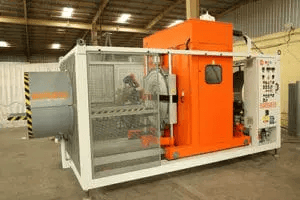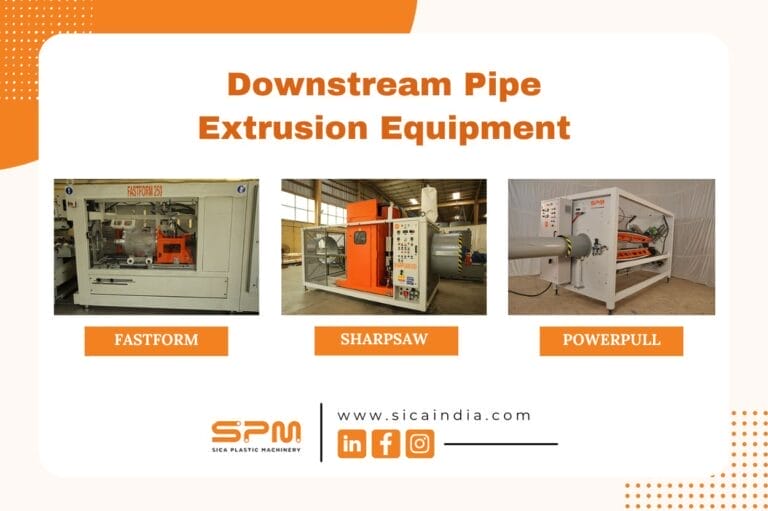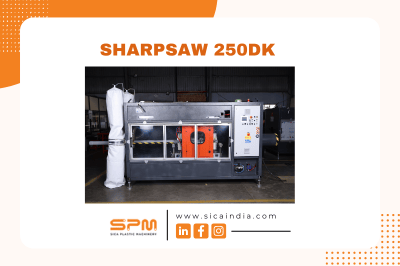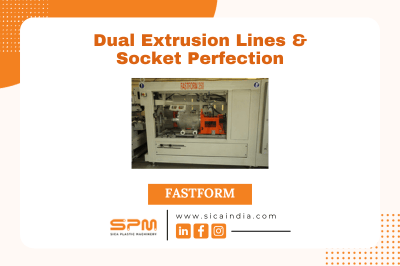Cutting Plastic Pipes

Plastic pipes are essential components in various construction and plumbing projects. Plastic pipe manufacturers often work with various types of plastic materials, such as PP, PVC, and HDPE, and need to cut these pipes into different standard sizes. These pipes often require precise cutting and chamfering to ensure they fit perfectly and function effectively.

The diameter size and length of the pipes determine the type of cutter that should be used. Using the appropriate cutter ensures precise and clean cuts, which are crucial for creating seamless connections between pipe ends. Stabilizing the pipe during cutting is also important to prevent angled cuts and ensure perpendicular cuts.
Why Chamfer Plastic Pipes?

Chamfering or beveling the ends of plastic pipes is a recommended step after cutting. Chamfering involves tapering or angling the sharp edges of the pipes to create a leak proof joint.
There are five primary reasons for chamfering:
- Smoothening Edges for Fittings: Chamfering removes any cutting burrs and shavings, leaving a clean surface. This smooth edge ensures that fittings can properly seat onto the pipe end, providing a secure connection.
- Preventing Seal Damage: Sharp and uneven edges on plastic pipes can damage rubber gaskets and O-rings, which are crucial for sealing pipe connections. Chamfering eliminates this sharpness, thereby safeguarding the integrity of the seals by allowing a smooth insertion of pipe into the socket.
- Enhanced Assembly Ease and Speed: Chamfered edges make it easier to align and insert pipes into fittings or connectors. This reduces the time and effort required during assembly, especially in tight or complex configurations. A smooth, angled end slides into joints more efficiently, minimizing resistance and the potential for misalignment.
- Reduced Risk of Injury: Working with plastic pipes often involves manual handling, where sharp edges can pose a risk of cuts or abrasions. Chamfering these edges reduces the likelihood of injury to workers or installers who handle the pipes. This safety aspect is particularly important in environments where workers are frequently cutting and fitting pipes.
- Improved Aesthetic Finish: In applications where the ends of pipes are visible, such as in exposed plumbing or in certain types of equipment, chamfered edges provide a neater, more professional finish. Unlike rough, cut edges, a chamfered edge is smooth and visually appealing, contributing to the overall aesthetic quality of the installation.
SHARPSAW – Plastic Pipe Cutter Features

The SHARPSAW chamfering machine by SICA India is an innovative solution that simplifies the processes of cutting and chamfering plastic pipes. It offers a streamlined approach by combining both tasks into a single step, increasing efficiency and accuracy.
SHARPSAW comes in different versions tailored for specific materials:
- SHARPSAW D Version: Designed for precise cutting of PVC and PP pipes, this version features a planetary disc rotary system, high-speed servo motors, and pipe clamps. It effortlessly cuts through thick-walled pipes, handles out-of-round shapes, and offers adjustable chamfer depth. The dynamically balanced cutting rotor and chip extraction system ensure accurate and efficient cutting.
- SHARPSAW K Version: Specifically designed Swarfless Cutter for HDPE and PPR pipes, this version features a planetary knife system, high-speed motors, and pipe clamps. It allows for precise and clean cuts without material wastage options include with chamfering or without chamfering.
- SHARPSAW DK Version: This series is a combination cutting system suitable for rigid pipes in PVC, PE, and PP. It consists of two arms: one with a cutting disc and/or milling cutter and the other with a knife only. The arm with the disc and/or milling cutter cuts the pipes to a specific depth first, while the arm with the knife completes the cut through the remaining wall thickness. This process ensures no chips/dust get inside the pipes.
All versions of SHARPSAW offer advantages such as hydraulically driven cutting arms, automatic chamfer depth adjustment, short cutting cycles suitable for high extrusion speeds, dynamically balanced cutting rotors, chip extraction systems, and optional synchronization for improved accuracy in cutting length.
By integrating cutting and chamfering into a single machine on D and DK Versions, SHARPSAW revolutionizes the preparation process of plastic pipes. It enhances efficiency, speed, safety, and overall productivity in preparing plastic pipes during their end use in laying and installation.
For more information on SHARPSAW and its features, please visit SICA India’s SHARPSAW page.





